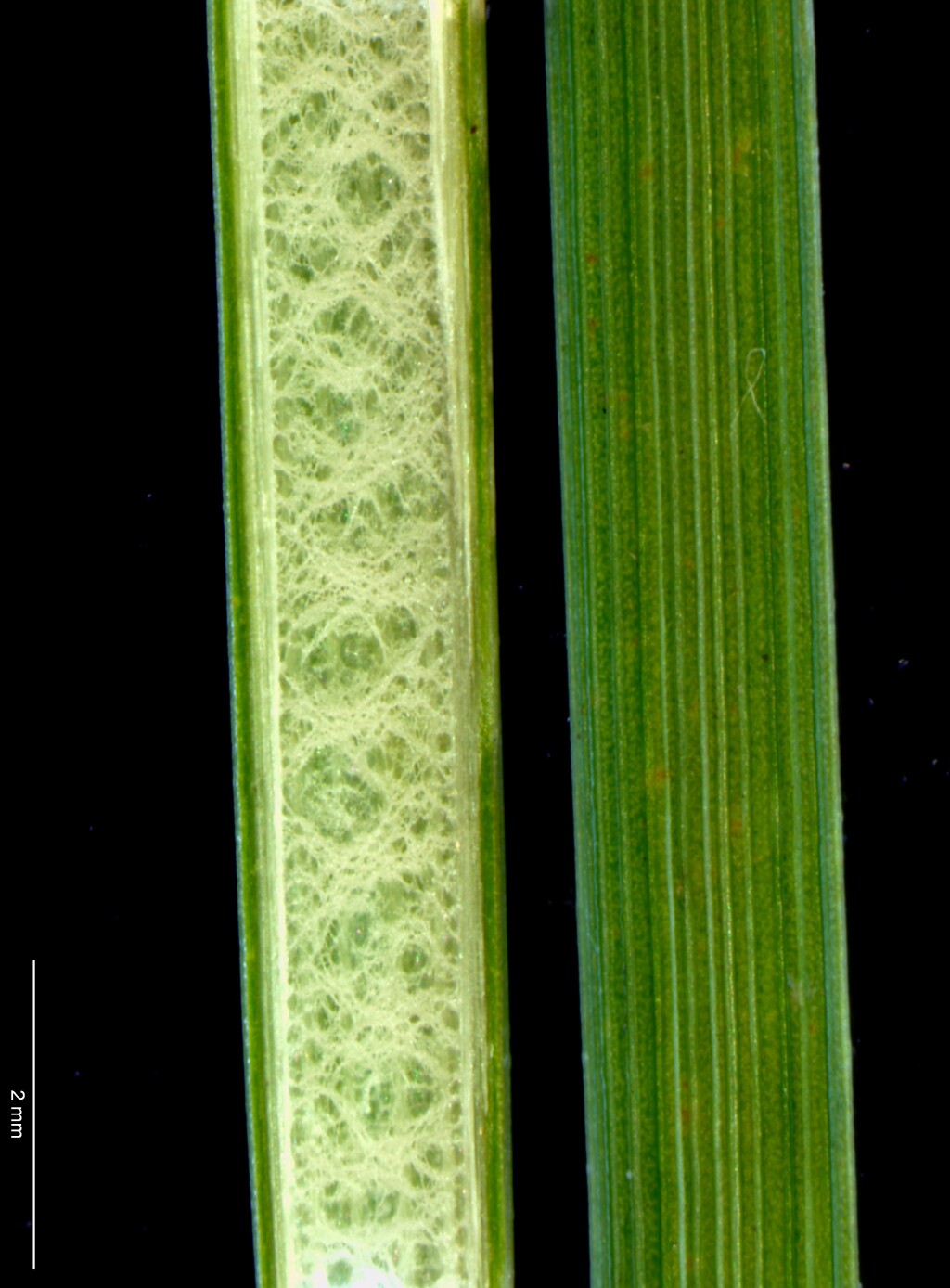Juncus sarophorus
L.A.S.Johnson Broom RushTufted perennial with horizontal or ascending rhizomes. Cataphylls tight or loose, dark brown to dark reddish-brown towards the base, to c. 30 cm long. Culms erect, dull green or bluish-green, 70–180 cm high and 1.0–4.0 mm diam.; striations 20–50, strongly raised, usually relatively widely spaced and easily counted; pith interrupted or rarely some culms with almost continuous cobwebby pith, air spaces variable in size but usually fairly small; stomates sunken in pits. Inflorescence rather dense, fan-shaped, flowers scattered (rarely clustered) along numerous branchlets; primary bract continuous with culm, to c. 40 cm long; prophylls present. Tepals with a green or very faintly reddish tinged midrib, drawn out to a long acute or acuminate apex, 2.0–2.5 mm long; stamens 3 (rarely 6), anthers 0.3–0.6(–0.9) mm long. Capsules usually stramineous or with a darker golden-brown or reddish-brown apex, slightly shorter than or equal to the outer tepals, 1.7–2.3 mm long. Flowers mostly Nov.–Feb., seeds shed mostly Dec.–Mar.
Wim, VVP, VRiv, MSB, MuF, GipP, OtP, WaP, Gold, CVU, GGr, DunT, NIS, EGL, EGU, HSF, HNF, OtR, Strz, MonT, HFE, VAlp. Also SA, NSW, ACT, Tas. New Zealand. A common species (particularly east of Melbourne) occurring on sites which are inundated or saturated for a considerable period.
The dense broom-shaped inflorescence is a diagnostic feature of this species. The inflorescence of Juncus usitatus is sometimes similar but is readily distinguished by the characters noted under that species. Rare specimens of J. sarophorus with slightly clustered flowers are similar (in the dried state) to forms of J. gregiflorus with less clustered inflorescences, but two can be separated on culm colour and striations, position of the stomates and tepal apices. Known to hybridize with J. semisolidus, J. subsecundus, J. pallidus, J. gregiflorus, J. brevibracteus and J. amabilis.
Albrecht, D.E. (1994). Juncus. In: Walsh, N.G.; Entwisle, T.J., Flora of Victoria Vol. 2, Ferns and Allied Plants, Conifers and Monocotyledons, pp. 197–233. Inkata Press, Melbourne.
 Spinning
Spinning


